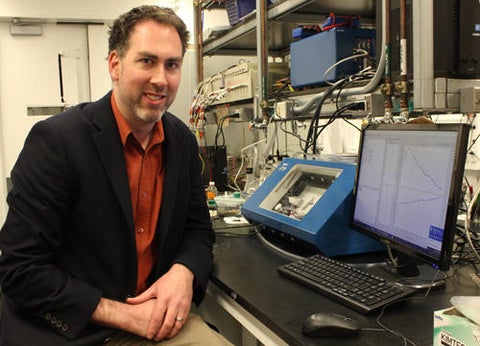Michael Pope doesn’t know how much daily battery life people would be willing to trade away for the convenience of smartphones that fully charge in a matter of just five or 10 seconds.
But after using nanotechnology for a recent breakthrough in the design of energy-storage devices known as supercapacitors, the Waterloo Engineering professor expects that question to become increasingly relevant in the case of cellphones, laptops and a wide range of other potential uses.

Chemical engineering professor Michael Pope has developed a better supercapacitor, paving the way for more applications of the green energy-storage devices.
Supercapacitors are a promising, green alternative to traditional batteries. Their advantages include rapid charging and discharging, improved safety and reliability, and a much longer overall lifespan.
The drawback is that they have relatively low storage capacity, greatly limiting their practical uses.
Existing commercial supercapacitors only store enough electrical energy, for instance, to power cellphones and laptops for about 10 per cent as long as rechargeable batteries.
The breakthrough by Pope and two collaborators – PhD student Zimin She and post-doctoral fellow Debasis Ghosh – roughly doubles that storage capacity.
The increase means supercapacitors can now be made small and light enough to be considered for more applications, particularly those requiring quick-charge, quick-discharge capabilities.
“We’re showing record numbers for the energy-storage capacity of supercapacitors,” says Pope, a chemical engineering professor. “And the more energy-dense we can make them, the more batteries we can start displacing.”
Even with additional development, supercapacitors are unlikely to approach even half of the storage capacity of batteries, which are also steadily improving.
But given the fact they charge so quickly, that might just be good enough for users to accept plugging in their phones two or three times a day for a few seconds, as opposed to once a day for an hour or more.
The same might be true of electric vehicle drivers and their willingness to sacrifice some range for the ability to fully recharge more often, but in a tiny fraction of the time.
“We have to inch forward in the scientific community,” Pope says of the charging-speed versus energy-storage trade-off.